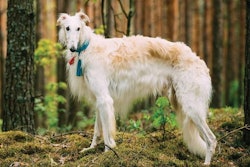
In the early stages of the pandemic, pet food brands and their suppliers experienced both a demand surge as pet owners stocked quarantine rations and an overall pet food market size increase as people obtained new fur babies and feathered friends to keep them company during lock down. While many people resorted to talking to their new pets during weeks of isolation, only some of them could talk back.
“With more people being at home, the bird category has realized some nice growth in 2020 as new bird owners came into the market,” Gary Rubin, Chief Operating Officer, TOP's Parrot Food, said. “We had many new bird owners contact us and explain how they were first-time 'parronts' and wanted to find high-quality food. Like other pet food companies, TOP's experienced a huge sales surge in March and April. It was certainly a wild time to be in the pet food business. Customers were buying three and four times the usual amounts because of all the sudden uncertainty. March was the best sales month to date in the company's history. Luckily, our growth curve has continued to climb even as the panic buying has calmed down.”
In July, TOP’s relocated its corporate offices, production facility and fulfillment center. Although TOP’s had planned expansions to their production capacity before COVID-19 lockdowns began, the increased capacity came in handy as the pandemic spread.
“TOP's Parrot Food's new facility has allowed our production capacity to triple so we can keep up with demand,” Rubin said. “In addition, our warehouse space has increased by five times from our previous location, which allows us to inventory more products and better serve our customers. Overall, the new space has provided room to continue to grow as a company.”
Backyard poultry ownership rising during pandemic
Starting early in the pandemic, people in the United States rapidly increased their rate of home poultry ownership, reported NPR. Many hatcheries found themselves overwhelmed as people looked to both secure their own source of eggs and gain new companions. The American Association of Retired People reported that some Americans were looking to rental services to provide the companionship and consumables of backyard hens with less long-term commitment.
For the first time, the American Pet Product Association included questions about backyard chicken flocks in its 2019-2020 U.S. pet ownership survey. In APPA’s survey of 10,090 current pet owners, 10% reported owning backyard chickens, which equated to approximately 10 million U.S. households. Owners of other pets were more likely to own poultry. Households with young children also were more likely to have poultry pets with 12% of respondents versus 6% in homes without little kids.
Hens may have started out as functional backyard egg-layers, but have begun fulfilling roles traditionally held by traditional pets. Eight out of 10 hen households reported considering their poultry to be pets. As hens become feather babies, owners may build emotional attachments and humanize the hens, although health and sanitary concerns mean poultry will likely never snuggle at owners’ feet in the night.
















